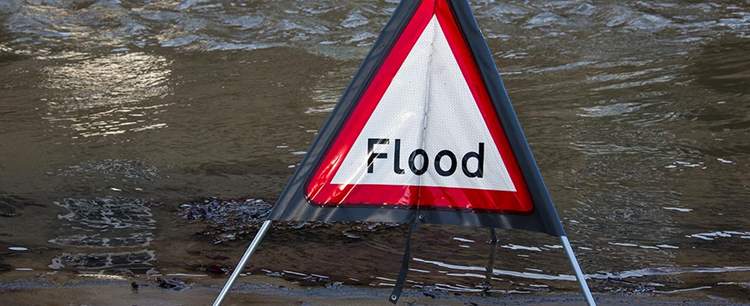In the UK, every year seems to bring its share of misery to thousands of households affected by flooding. Sadly, there seems to be no end in sight. The Met Office has said that the risk of flooding in England and Wales is at least 20% and perhaps even as much as 90% more prevalent now than in previous years thanks to global warming.
If flooding seems to be an inescapable issue for the future, though, it is still possible to be better prepared for the problems, loss, and damage that it brings.
Knowing the risks
Whether you are a homeowner, landlord or tenant, now is the time to understand whether your property is in an area subject to flooding – from heavy rainfall, rising rivers, or high tides. Armed with your postcode, you can easily find out by visiting the official Flood Information Service.
If it seems that the risk is likely to become a real threat of flooding, make sure to listen out for the three different levels of alert provided by the Flood Information Service – namely:
- flood alert – when you should be prepared for the possibility of flooding;
- flood warning – when you should now be taking action to prevent physical injury and mitigate any loss or damage; and
- severe flood warning – which is issued when there is a known danger to life.
Flood insurance
Flooding causes extensive damage to property that is costly to repair and put right. An article in the Chartered Insurance Institute’s Journal magazine in January 2020 reported that insurance settlements to households in the Midlands and Yorkshire alone that winter amounted to £110 million.
Whether you are in a high-risk area or apparently safe from the worst effects, you might want to check that your home insurance policy incorporates adequate flood insurance cover for loss and damage caused by flooding.
Preparing for the worst
Even when you are aware of the risks and have taken the precaution of arranging suitable flood insurance, the tension, fear, and worry is bound to mount as the flood warnings mount in their urgency.
Here are some of the steps you might want to take to safeguard yourself, your family, and your home:
- fitted cupboards in your kitchen and bathroom will better withstand flood damage if they are made of solid wood, plastic, or stainless steel rather than chipboard;
- if you discover that your home is susceptible to flooding consider employing an electrician to raise plug sockets (at least 5ft or 1.5m above floor level), suggests the UK’s Electrical Safety First, install water-resistant skirting boards, and choose floor coverings of tiles and scattered rugs, rather than more difficult to replace fitted carpets;
- make sure you know how to turn off the gas, water, and electricity – the last is important because of the risk of electric shock as floodwaters rise;
- before any floodwaters begin to threaten your house, move your car to higher ground, but still as close as possible to home;
- early preparation for any approaching flood is likely to have meant getting a plentiful supply of sandbags – these will be useful for stemming at least some of the water entering through exterior doors but also remember to keep one to put into open toilet bowls to prevent any backflow of sewage;
- as a further defence against water seeping through the front door or patio doors, you can also buy special guards to place over them and seal any gaps;
- you can also buy special guards to fit over ventilation and air-bricks – just remember to remove them when the danger of flooding has passed;
- non-return valves can also be fitted to pipes, rainwater goods, and drainpipes to prevent water backing up during floods;
- valuable or easily-moved items and furniture can be moved upstairs or, if you live in a bungalow, placed as high as possible – by lifting furniture onto plinths, for example, and valuable documents on shelves or cupboards that are high on the wall;
- televisions, sound systems, and similar electrical appliances should be fitted to the wall or placed shelves mounted as high as possible;
- keep ready a supply of sealable plastic bags in which you can stow important items to save getting wet;
- the charity Age UK suggests that you keep ready to hand a “flood kit” you have prepared earlier – this would contain essential items such as food and bottled water, a torch, portable radio, warm clothes, blankets, first aid box, fully charged mobile phone, and important information such as telephone numbers and insurance policy details.
Despite your best efforts and the many effective ways of mitigating loss or damage, be resigned to the fact that it is impossible to entirely waterproof your home against rising floodwaters.







